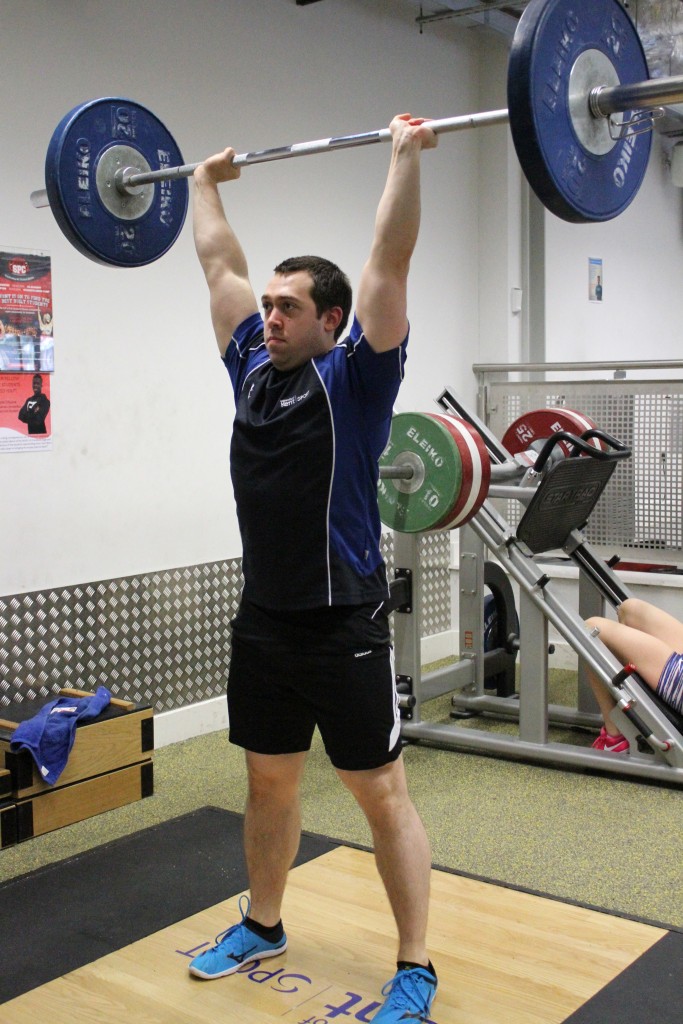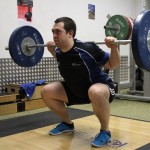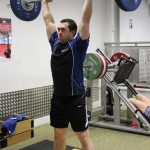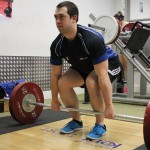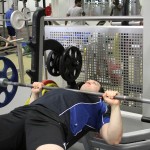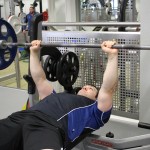The Kent Sport weightlifting challenge for 2015 is now underway, open to all Kent Sport members. Every six to eight weeks, a new lift will be introduced and a leader board set up. Those who choose to take part may attempt to set a one rep maximal repetition in one or more of the lifts.
The competition will run all through the academic year so you have plenty of time to improve on your efforts, entering as many times as you’d like in as many of the lifts interested in. The only rules are no lifting straps (chalk is permitted) and the bar must be lowered to the floor (not dropped from the top). Make sure you have a member of the fitness team on hand to verify the lift otherwise it will not be counted!
The first contested lift is the barbell deadlift.
If you haven’t done a deadlift before or would like to know how to improve your lift – pay attention! Below, I’ve outlined a short guide on how to get the most of this exercise.
1. Find your favoured stance: sumo or conventional?
When thinking of a deadlift, most people think of it in its conventional form – feet under the hips, hands outside the knees. However, there is an alternative technique called the sumo stance – this stance places the feet outside the shoulders and the hands inside the legs.
The advantages of the sumo stance are to dramatically shorten the distance required to move the bar and thus reduce the effort required to lift a very heavy weight. This helps produce a more upright back position at the start – perfect for those with back problems! Lighter lifters who lack the muscle mass, longer ‘levers’ of bigger, heavier lifters and ladies (due to a wider hip angle) may benefit from using the sumo stance deadlift.
2. Start strong; keep the bar close.
With any lift, it is important to give yourself the best biomechanical advantage possible – an efficient movement is a stronger movement. If the bar starts too far out in front, your centre of gravity will shift forwards and increase the sheer force on the lower back.
When you set up, whether it is conventional or sumo stance, keep the bar pinned close to the shins at the start and keep it there until at least past the knees. For conventional, this means the bar will be directly over the knot in your shoe laces would normally be. For sumo the bar will start right up against the shins. Do not make your lifts harder than they need to be!
3. Train the back.
A strong back is vital to both a strong pull and reduces the risk of injury. Those who have deadlifted before will have experienced some sort of back pain after a session, making it imperative to minimise the risk. A good way to solve this is through better technical cues – lifting the chest to initiate the pull or even dropping the weight until you can master the correct technique.
Building a strong back will also help to improve the upper back strength and grip strength that leads to bigger lifts; heavy chest supported rows for six to 10 reps or single arm dumbbell rows can provide a strong training stimulus without adding additional work for the lower back.
Another exercise that has tremendous carryover to the deadlift is the Romanian Deadlift; in essence, this is a deadlift in reverse since it starts at the top of the movement but unlike the deadlift, the RDL has a loading phase in the same way that a squat and bench press have ‘loading’ phases at the start of the movement. The RDL will teach you to maintain a neutral and strong back position under load while helping to strengthen the hamstrings and glutei complex that contribute to the final phase of the deadlift.
- To perform an RDL, hold a bar as you would for the deadlift, in a strong upright stance. Brace the core and lower back, and unlock the knees slightly. Keeping the shins vertical, push the hips back and slide the bar down the thighs, keeping it in contact at all times whilst maintaining the neutral back position. Once the bar has reached the bottom of the knees, reverse the movement and pull the hips into the bar. Go only as low as you can while maintaining tension in the hamstrings and do not allow the lower back to round.
4. Train the legs (this does not mean the leg press!).
Despite its reputation as a ‘back’ lift, the deadlift’s initial drive off the floor should come from the legs, especially for sumo since you cannot utilise the back as much. Therefore to build a strong pull from the floor, train the legs as often, if not more, as you deadlift.
The key exercises for these are going to be squat variants such as the back squat and front squat where the whole body is involved in creating force and stabilising the joints.
Do not rely on the leg press to do this work for you.
It’s very common to see athletes with very large leg press numbers put up poor deadlift numbers and even worse squat numbers. Alternatively, train the legs and pull at the same time using the trap bar deadlift; the body position of this lift allows the lifter to use their legs to a greater degree than a barbell while a more upright torso position puts less strain on the lower back.
5. Keep your programming simple.
There is no single correct way to train the deadlift, but there are a few things to remember when designing your deadlift programmes.
First: Keep the reps low. Strength is primarily built in the one to six reps range, and since the point of the deadlift is to work up to a heavy weight, any more then that may cause form to breakdown to the point of injury.
Second: Get sufficient recovery. Deadlifts can be very tiring on the body, so allow time to recover between deadlift sessions – one to two sessions a week of deadlifts is sufficient for most athletes.
Third: Remember that to improve at anything requires practise. While it is possible to train the muscles of the deadlift separately, the only way to build confidence and good technique will be to do a significant amount of deadlifts. If you are serious about building a great deadlift, put it first in your session, so you can’t find an excuse to avoid it!
Ben Roberts is a certified Health and Fitness instructor for Kent Sport. The Weightlifting challenge is part of our 50:50 activities happening throughout the year. For Kent Sport news, events and special offers, Like us on Facebook and follow us on Twitter @UniKentSports.
- Sumo position

